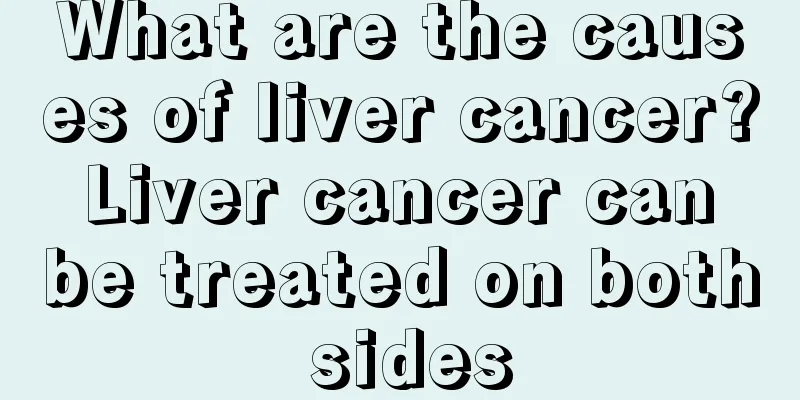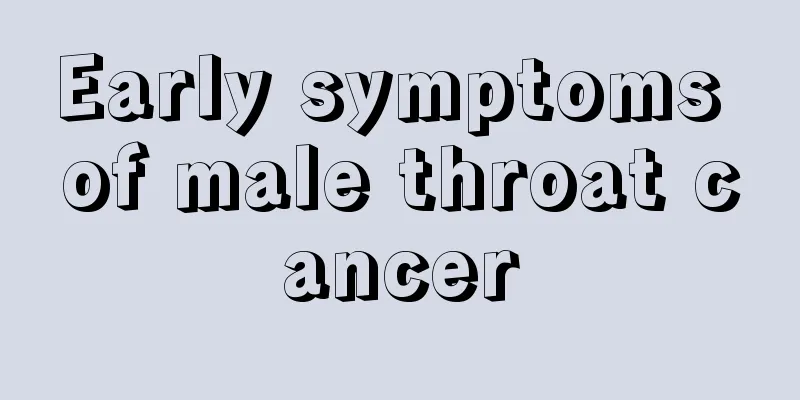What can I eat after recovering from diarrhea

|
There are many reasons for diarrhea, but most of them are caused by inappropriate food, such as eating cold or bad food, etc. Enteritis is a more serious condition and requires medication and attention to diet until diarrhea stops. What can I eat after recovering from diarrhea? The stomach and intestines that have just recovered are still relatively sensitive and fragile, so it is better to drink more porridge and eat something that is easier to digest. What to eat when you have diarrhea 1. Eat fruit You can eat some fruits as an auxiliary treatment for diarrhea, but not all fruits can be eaten. You can eat apples, pomegranates, etc. if you have diarrhea; you cannot eat pears, watermelons, bananas, etc. if you have diarrhea. Cut the apple into small pieces with the skin and core, boil them in water for 3 to 5 minutes, and eat them after they are warm. It should be noted that when eating cooked apples, it is not advisable to add sucrose for seasoning, because sucrose may aggravate diarrhea. 2. Drink porridge If you have diarrhea, you can drink some white porridge with salt, but it is recommended not to add meat. Meat porridge will also increase the burden on the stomach and intestines. Although the pain will be relieved after defecation, the stomach and intestines will have varying degrees of edema due to inflammation. If you eat meat dishes, it will aggravate the condition. Therefore, within two to three days after diarrhea, the diet should be light. You may as well drink some white porridge with a little salt. 3. Eat pasta If you have diarrhea, you need to eat some food that is easier to digest. Pasta is a good choice. Noodles are rich in nutrients and are relatively easy to digest and absorb, so eating noodles is a good choice for people with diarrhea. However, for people with diarrhea, the noodles they eat should not be too greasy, as too greasy noodles will increase the burden on the stomach and intestines. What can't you eat if you have diarrhea? 1. Irritating foods: Hot peppers, mustard, pepper, garlic and other highly irritating foods can irritate the gastrointestinal mucosa, easily causing diarrhea or gastrointestinal inflammation, and are not conducive to the recovery of gastrointestinal function. 2. Too greasy food: Too greasy food will increase the burden on the stomach and cause diarrhea due to indigestion, which is typical fatty diarrhea. Therefore, people with diarrhea should not eat greasy food, as this will only aggravate the diarrhea. 3. Too cold food: Cold drinks, cold dishes and other too cold things will stimulate the intestines, speed up intestinal peristalsis and make diarrhea more serious. 4. Foods that have laxative and intestinal moisturizing effects: Foods that have laxative and intestinal moisturizing effects, such as peaches, bananas, honey, etc., will aggravate the condition after consumption. 5. Eggs: Eggs are high-protein foods and are difficult to digest. Eating eggs not only fails to nourish the body, but instead aggravates the condition. 6. Garlic: Although garlic has a bactericidal effect, it also has a strong irritating effect and can easily aggravate diarrhea. Dietary considerations for diarrhea Acute diarrhea (1) Fasting during the acute phase: During the acute phase of watery diarrhea, it is necessary to temporarily fast to allow the intestines to rest completely. If necessary, intravenous fluids should be given to prevent dehydration due to excessive water loss. (2) Light liquid diet: For those who do not need to fast, a light liquid diet such as protein water, fruit juice, rice soup, thin noodle soup, etc., mainly salty, should be given at the beginning of the disease. Liquid foods that are prone to gas production, such as milk and sucrose, are prohibited in the early stages. Some patients are not adapted to milk, and diarrhea is often aggravated after drinking milk, so it should be used with caution. (3) Adjust diet according to the condition: reduce the frequency of bowel movements, and after symptoms are relieved, switch to a low-fat liquid diet, or a low-fat, low-residue, soft and easy-to-digest semi-liquid diet, such as rice porridge, lotus root powder, soft noodles, and dough sheets. (4) Dietary choice: After the diarrhea has basically stopped, a low-fat, low-residue semi-liquid diet or soft food can be provided. Eat small meals frequently to facilitate digestion, such as noodles, porridge, steamed buns, soft rice, lean meat paste, etc. You should still appropriately limit the intake of vegetables and fruits rich in crude fiber, and then gradually transition to normal food. (5) Vitamin supplements: Pay attention to the supplementation of vitamin B complex and vitamin C, such as fresh orange juice, fruit juice, tomato juice, vegetable soup, etc. (6) Dietary taboos: No alcohol, fatty meat, hard vegetables and vegetables high in crude fiber, raw and cold fruits, greasy snacks and cold drinks, etc. Chronic diarrhea (1) High protein and high energy: The daily energy is 2500-3000 kal and the protein supply is 100 g per day to replenish the energy consumed by the human body due to long-term diarrhea, improve anemia and malnutrition, and restore body weight. (2) Low fat and low dietary fiber: The daily fat intake is about 40g. Excessive fat is difficult to digest, and fatty acids can stimulate intestinal peristalsis. Low fiber content can reduce intestinal irritation. (3) Adequate water and rich vitamins and minerals: 2,000 to 3,000 ml of water per day. Adequate amounts of vitamins should be supplied, especially B vitamins and potassium. Beef juice, fruit juice, soybeans, spinach, etc. can be selected. (4) Dietary taboos: For osmotic diarrhea caused by lactose intolerance, lactose should be removed from the diet or lactase should be added; for fat diarrhea caused by malabsorption, fat intake should be avoided. Avoid hard foods such as ham, sausage, bacon and spicy foods such as peppers, wine, mustard, curry, etc. |
<<: How to deal with formaldehyde removal
>>: Where should I massage when a child has diarrhea
Recommend
Causes and treatments of gastrointestinal bleeding
There are many causes of gastrointestinal bleedin...
How long can you live with pancreatic cancer
In life, people think that pancreatic cancer is a...
How to massage if you sprain your ankle? Scientific treatment is the most critical
Spraining your ankle is a sudden condition. Many ...
What are the causes of acute urticaria
Skin disease is the most painful disease, especia...
What Chinese medicine should I take for axillary lymphoma
We all know that lymphoma is a malignant tumor or...
Pubic pain after normal delivery
Many women experience pubic pain after giving bir...
What can I eat to expel intestinal gas?
If you have a poor diet, indigestion, or gastroin...
What are the dangers of excessive calcium
Do you know the harm of calcium overdose? Many pe...
How to wash off the grape juice
What we hate most in our lives is that our clothe...
Which cold medicine is best? You also need to choose the right medicine to treat a cold
When you have a cold, you cannot take medicine at...
Is it serious to have blood in stool occasionally
Blood in the stool is a relatively serious sympto...
Which hospital is reliable for treating osteosarcoma
Some osteosarcoma patients, after being diagnosed...
Unblocking blocked meridians throughout the body
Nowadays, many diseases are becoming more common ...
Homemade foam insulation box
Insulated boxes are widely popular in daily life ...
Discuss the complications of prostate cancer
In recent years, prostate cancer has become one o...









